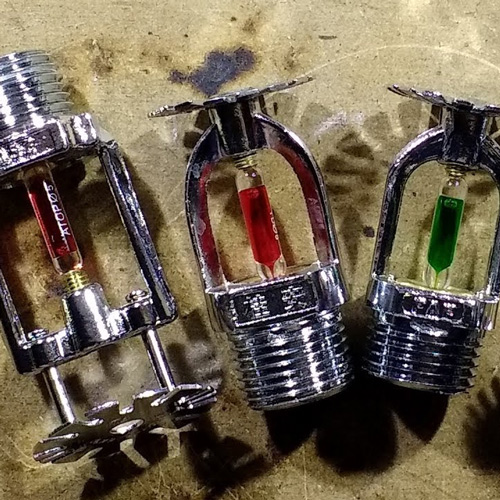Key Differences and Applications
Fire safety is a key aspect of building design and management. Fire sprinklers are one of the most effective means of fighting fires, allowing for a quick and effective response to fire detection. However, there are many different types of sprinklers, which differ in their operation and application. In this article, we will focus on the two basic types: water and foam sprinklers, discussing their key differences and applications.
Water sprinklers
Water sprinklers are the most common type of fire sprinkler. They operate by detecting a temperature rise above a predetermined threshold, which automatically starts spraying water. Water is an effective fire extinguishing agent due to its ability to absorb heat and create a vapor barrier that limits oxygen access to the fire. Water is a universal extinguishing agent, effective against most types of fires, making water sprinklers a universal fire protection tool.
Foam sprinklers
Foam sprinklers, as the name suggests, use foam to extinguish fires. Foam is a mixture of water, air, and a special foaming agent that creates a stable foam structure. Foam has several advantages as an extinguishing agent – it is lightweight, so it does not burden the building structure, and it also creates an insulating layer that prevents re-ignition. Foam is particularly effective against flammable liquid fires, because it creates an insulating layer on them that prevents access of oxygen, necessary to maintain the combustion process.
Key Differences and Applications
Here are some key differences between water and foam sprinklers and their typical applications:
- Extinguishing efficiency: As already mentioned, water is a universal extinguishing agent, effective against most types of fires. Foam is particularly effective against flammable liquid fires, thanks to the creation of an insulating layer.
- Weight and Loading of Structures: Water is heavy, which can be a problem for weakly constructed buildings. Foam is much lighter, making it more suitable for such structures.
- Applications: Water sprinklers are commonly used in most types of buildings, from residential homes to office buildings. Foam sprinklers are often used in areas where there is a risk of flammable liquid fires, such as gas stations, chemical storage facilities, and some industrial plants.
- Action time: Thanks to its structure, foam is able to stay on the surface of the fire for a longer time than water, which allows for effective extinguishing of even difficult-to-control fires.
- Safety for people and the environment: Both water and foam are extinguishing agents that are safe for people and the environment. However, it is worth remembering that some types of foam may require special disposal due to the presence of foaming agents.

Summary
Water and foam sprinklers are two basic types of fire sprinklers that differ in terms of operation and applications. The choice between them depends on the specifics of the facility and the type of potential fire hazard. Water sprinklers, due to their versatility, are most commonly used, but foam sprinklers can be irreplaceable in places where there is a risk of flammable liquid fires.
It is therefore important to thoroughly analyze the specifics of a given facility when designing a fire protection system and to adapt appropriate solutions to it. Remember that fire safety is not only about appropriate equipment, but above all, appropriate knowledge and risk awareness.
